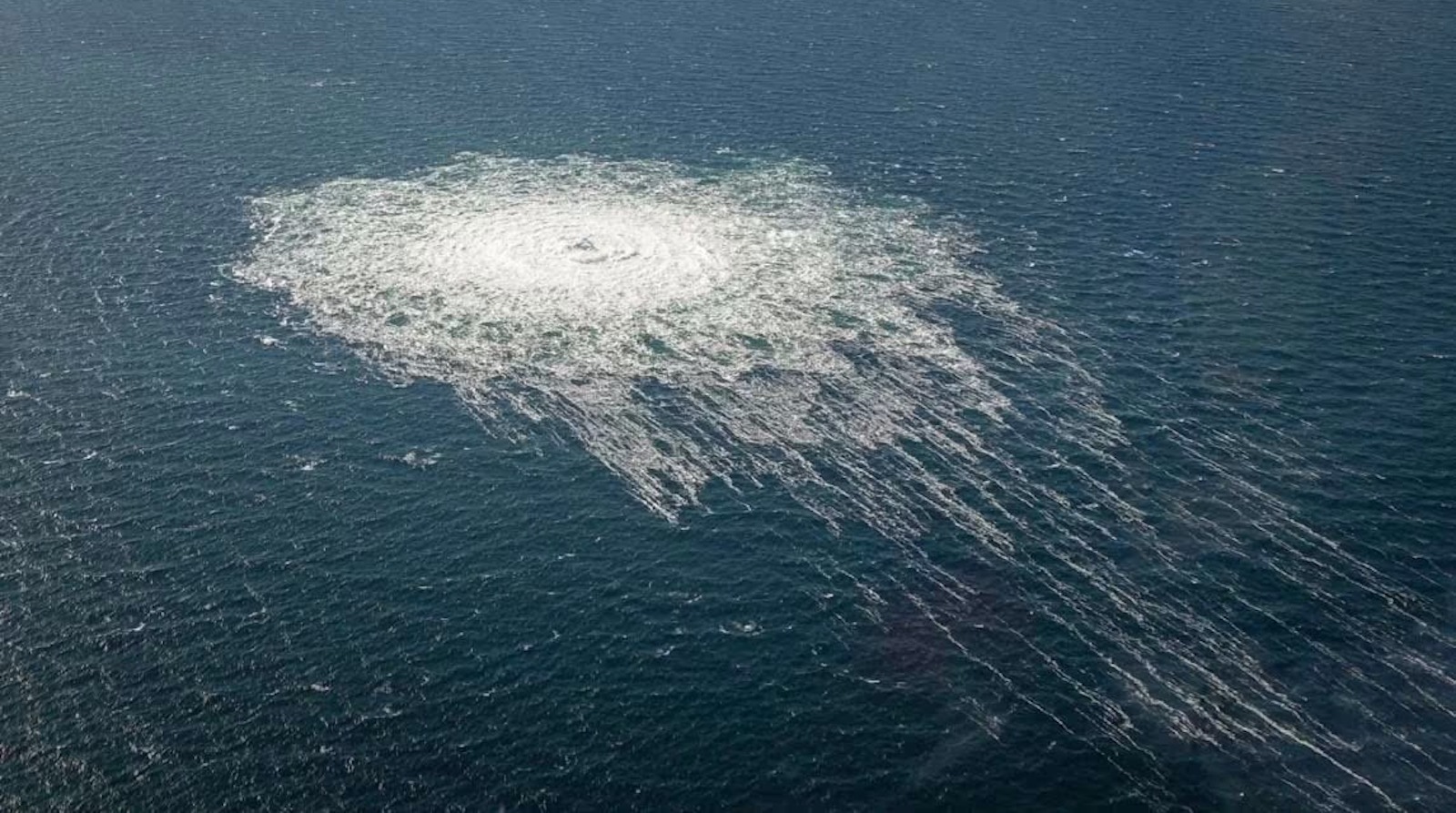This story was originally published by The Guardian and is reproduced here as part of the Climate Desk collaboration.
Scientists fear methane erupting from the burst Nord Stream pipelines into the Baltic Sea could be one of the worst natural gas leaks ever and pose significant climate risks.
Neither of the two breached Nord Stream pipelines, which run between Russia and Germany, was operational, but both contained natural gas. This mostly consists of methane — a greenhouse gas that is the biggest cause of climate heating after carbon dioxide.
The extent of the leaks is still unclear but rough estimates by scientists, based on the volume of gas reportedly in one of the pipelines, vary between 100,000 and 350,000 tons of methane.
Jasmin Cooper, a research associate at Imperial College London’s department of chemical engineering, said a “lot of uncertainty” surrounded the leak.
“We know there are three explosions but we don’t know if there are three holes in the sides of the pipe or how big the breaks are,” said Cooper. “It’s difficult to know how much is reaching the surface. But it is potentially hundreds of thousands of tons of methane: quite a big volume being pumped into the atmosphere.”
Nord Stream 2, which was intended to increase the flow of gas from Russia to Germany, reportedly contained 300 million cubic meters of gas when Berlin halted the certification process shortly before Russia invaded Ukraine.
That volume alone would translate to 200,000 tons of methane, Cooper said. If it all escaped, it would exceed the 100,000 tons of methane vented by the Aliso Canyon blowout, the biggest gas leak in U.S. history, which happened in California in 2015. Aliso had the warming equivalent of half a million cars.
“It has the potential to be one of the biggest gas leaks,” said Cooper. “The climate risks from the methane leak are quite large. Methane is a potent greenhouse gas, 30 times stronger than CO2 over 100 years and more than 80 times stronger over 20 years.
Professor Grant Allen, an expert in Earth and environmental science at Manchester University, said it was unlikely that natural processes, which convert small amounts of methane into carbon dioxide, would be able to absorb much of the leak.
“This is a colossal amount of gas, in really large bubbles. If you have small sources of gas, nature will help out by digesting the gas. In the Deepwater Horizon spill, there was a lot of attenuation of methane by bacteria,” Allen said.
“My scientific experience is telling me that — with a big blow-up like this — methane will not have time to be attenuated by nature. So a significant proportion will be vented as methane gas.”
Unlike oil spill, gas will not have as polluting an effect on the marine environment, Allen said.
“But in terms of greenhouse gasses, it’s a reckless and unnecessary emission to the atmosphere.”
Germany’s environment agency said there were no containment mechanisms on the pipeline, so the entire contents were likely to escape.
The Danish Energy Agency said on Wednesday that the pipelines contained 778 million cubic meters of natural gas in total — the equivalent of 32 percent of Danish annual CO2 emissions.
This is almost twice the volume initially estimated by scientists. This would significantly bump up estimates of methane leaked to the atmosphere, from 200,000 to more than 400,000 tons. More than half the gas had left the pipes and the remainder is expected be gone by Sunday, the agency said.
Jean-Francois Gauthier, vice-president of measurements at the commercial methane-measuring satellite firm GHGSat, said evaluating the total gas volume emitted was “challenging”.
“There is little information on the size of the breach and whether it is still going on” Gauthier said. “If it’s a significant enough breach, it would empty itself.
“It’s safe to say that we’re talking about hundreds of thousands of tons of methane. In terms of leaks, it’s certainly a very serious one. The catastrophic instantaneous nature of this one — I’ve certainly never seen anything like that before.”
In terms of the climate impact, 250,000 tons of methane was equivalent to the impact of 1.3 million cars driven on the road for a year, Gauthier said.



